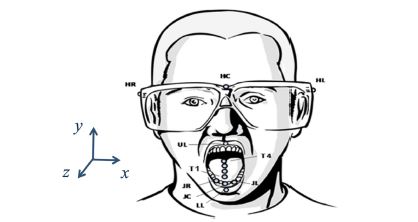Dataset: ArticularyWordRecognition
| Train Size | Test Size | Length | Number of Classes | Number of Dimensions | Type |
| 275 | 300 | 144 | 25 | 9 | MOTION |
| Data Source: | Link Here |
| Donated By: | J Wang, UCR |
| Description: | An Electromagnetic Articulograph (EMA) is an apparatus used to measure the movement of the tongue and lips during speech. The motion tracking using EMA is registered by attaching small sensors on the surface of the articulators (e.g., tongue and lips). This is the EMA dataset in [1] which contains data collected from multiple native English native speakers producing 25 words. Twelve sensors were used in data collection, each providing X, Y and Z time-series positions with a sampling rate of 200 Hz. The sensors are located on the forehead, tongue; from tip to back in the midline, lips and jaw. The three head sensors (Head Center, Head Right, and Head Left) attached on a pair of glasses were used to calculate head-independent movement of other sensors. Tongue sensors were named T1, T2, T3, and T4, from tip to back. Of the total of 36 available dimensions, this data set includes just 9. For more details about the data collection procedure and description, please refer to [1]. The data we used was from the website associated with [2] and is included in the problem zip. Originally it was split into three sensors: Relevant Papers: |
